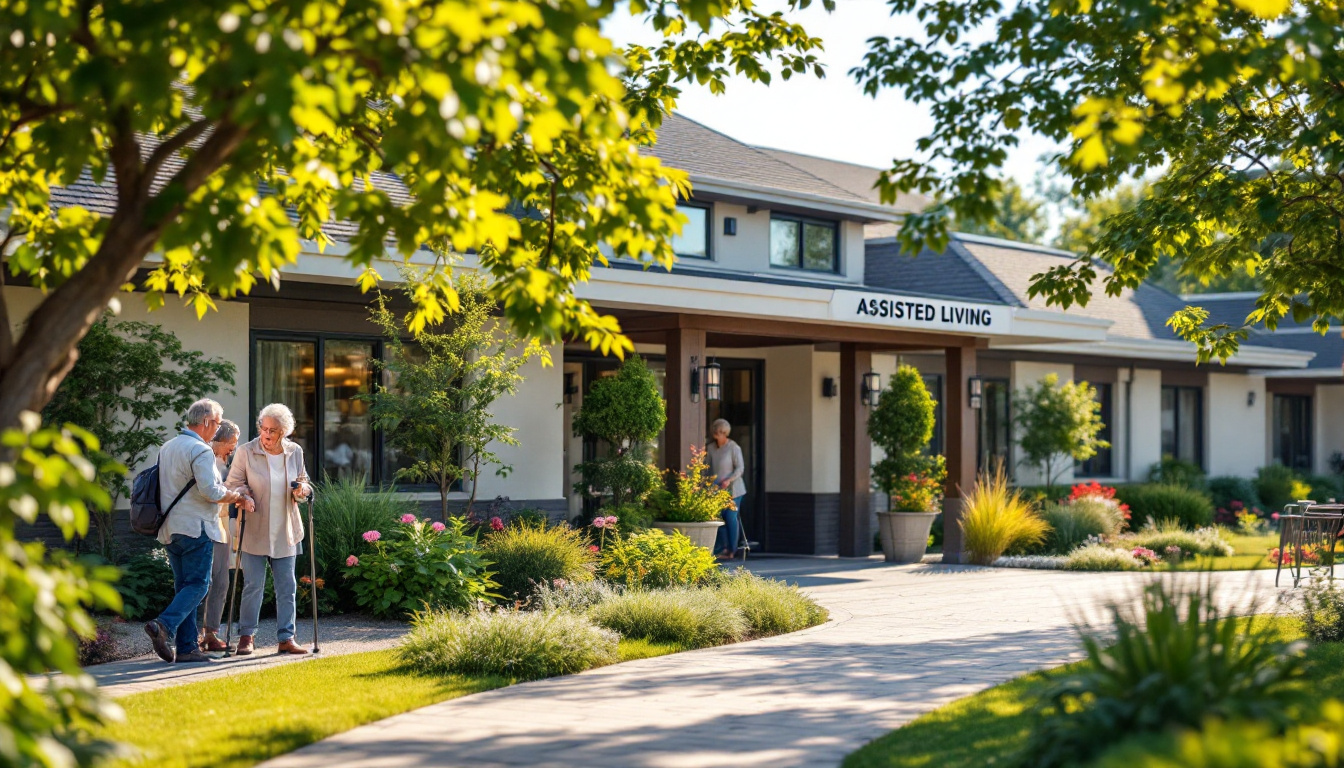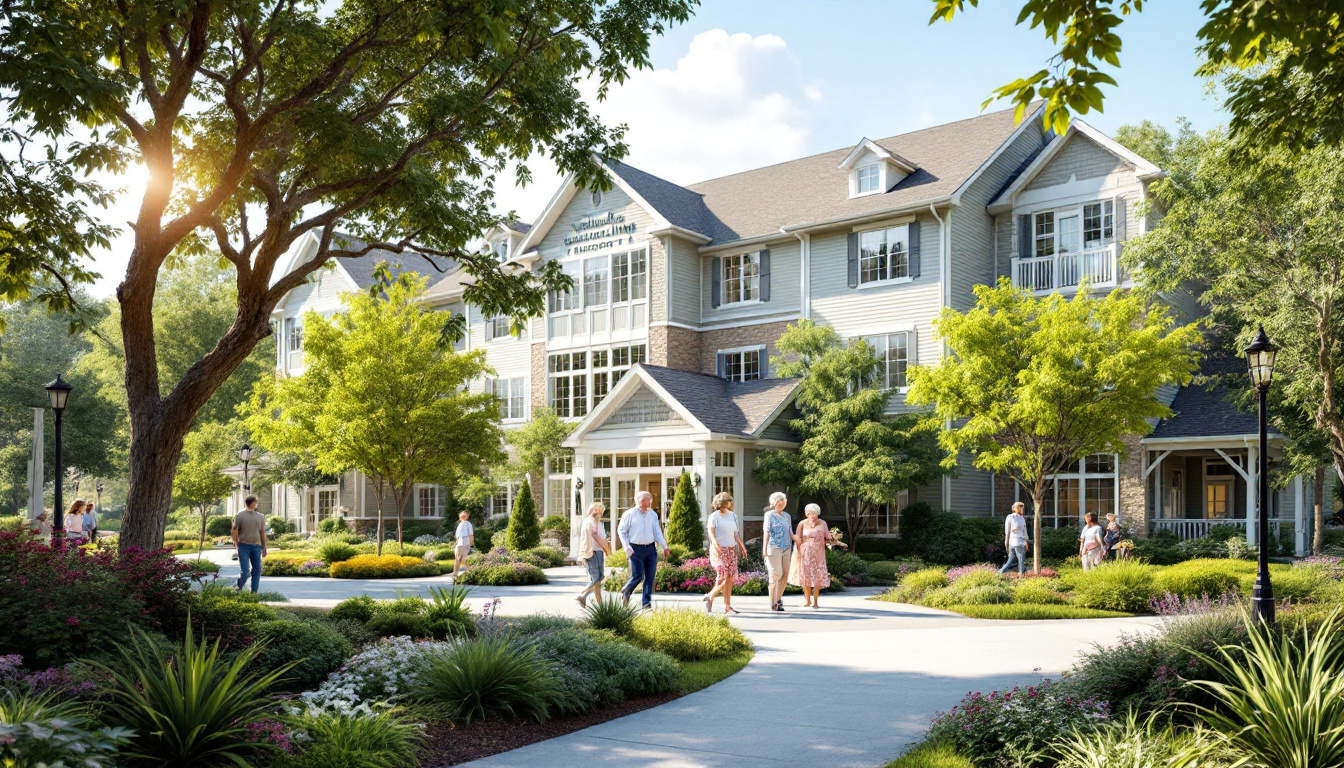How to Prepare for a Smooth Transition to Senior Care
Navigating the Path to Senior Care with Confidence

Ensuring a Smooth Transition to Senior Living
Moving a loved one into senior care is a significant life event that requires careful planning, emotional sensitivity, and community involvement. Proper preparation not only eases the transition but also promotes wellbeing, independence, and happiness for seniors entering assisted living or nursing facilities. This comprehensive guide offers practical strategies and insights to help families navigate this process seamlessly.
Developing a Comprehensive Care and Transition Plan

What are the essential steps in planning and preparing for a move into senior care?
Planning and preparing for a move into senior care involves several important steps to ensure a smooth transition for the individual. First, it is vital to create a detailed caregiving and moving strategy that covers current needs and anticipates future requirements. This includes clarifying and assigning roles among family members or caregivers, as well as organizing legal and financial documents such as wills, health directives, and powers of attorney.
An essential part of the process is exploring different care options, including in-home care, assisted living, and nursing facilities. Consulting healthcare providers helps to assess and monitor health, medications, and cognitive needs. To facilitate the physical move, early downsizing is recommended—sorting through possessions, donating or selling unnecessary items, and carefully organizing what will go into the new space.
Preparing the new environment is equally critical. This may involve safety modifications and arranging personal items that foster familiarity and comfort. Emotional support also plays a crucial role; discussing preferences and maintaining social connections can help ease anxiety. Involving the senior in decision-making processes and planning for their end-of-life wishes can make the move less stressful and more respectful of their dignity.
By following these steps—covering legal and financial preparations, health assessments, and emotional considerations—families can promote a successful transition into senior care, ensuring safety, comfort, and emotional well-being for their loved ones.
Involving the Elderly and Family in Decision-Making
When transitioning to senior living, involving the elderly and their families in the decision-making process is essential for a smooth and positive experience. Respecting the senior’s preferences and autonomy sets a foundation of trust and comfort. Families should actively engage seniors in discussions about their needs, desires, and expectations, ensuring they feel heard and valued.
Engagement can include conversations about the type of environment they prefer, focusing on amenities, location, and social opportunities that appeal to them. It is also helpful to involve the senior in choosing specific community features, such as dining options, activity programs, and safety measures, to foster a sense of control and independence.
The role of family members and caregivers is vital in planning and supporting the process. They can assist with gathering information, touring communities, and exploring financial options. Clear communication helps delineate responsibilities and ensures everyone understands the caregiving roles, whether it involves coordinating medical care or managing finances.
Addressing fears and expectations openly is crucial. Families should listen empathetically to concerns about leaving a familiar home or fear of losing independence. Providing reassurance and emphasizing the opportunities for new social connections, activities, and support services can ease anxieties.
Research indicates that involving seniors in decision-making not only respects their dignity but also increases their satisfaction with the move. This participation helps them feel more secure about their new environment and more willing to embrace the transition.
Ultimately, fostering open dialogue combined with respect for the senior’s wishes and autonomy promotes a more comfortable, confident move. This approach supports emotional well-being, maintains dignity, and helps create a positive outlook on the new chapter of life.
Recognizing Signs of Readiness and Need for Placement

What are common signs that a senior is ready for senior care placement?
Deciding when a senior should consider moving to assisted living can be challenging for families and caregivers. There are several indicators that suggest a senior might benefit from a higher level of support.
One of the most noticeable signs involves difficulty with daily activities. If a senior struggles with dressing, bathing, eating, or maintaining their living space, these challenges can lead to safety risks like falls or neglect. Physical health changes such as unsteady walking, recent falls, or unexplained bruises are also red flags. Weight loss and fatigue may indicate worsening medical conditions that require monitoring and assistance.
Cognitive and behavioral shifts are equally important. Memory lapses, confusion, getting lost in familiar surroundings, or consistently misplacing objects highlight cognitive decline. Emotional symptoms, including social withdrawal, feelings of loneliness, depression, or agitation, can suggest that a senior is struggling to cope alone.
Safety at home is a major factor. An unsafe environment—be it cluttered walkways, broken lighting, or lack of assistive devices—can threaten well-being. If caregivers notice they are overwhelmed or experiencing burnout, it's a sign that professional help might be necessary.
Additionally, medication mismanagement, neglecting personal hygiene, or accumulating household hazards point toward the need for a supportive community environment.
Recognizing these signs early helps families make informed decisions, ensuring their loved ones receive appropriate care and maintain quality of life. Moving to an assisted living community provides the needed assistance while fostering social engagement and safety.
Reviewing signs that a senior is ready for assisted living can help families act timely and reduce risks associated with aging and health decline. Open communication with healthcare providers, diligent observation of daily behaviors, and early planning are all vital steps in this transition process.
Preparing the Environment and Moving Logistics
What safety modifications should be made in the new home?
Creating a safe and accessible environment is essential for seniors adjusting to assisted living. Safety modifications include installing grab bars in bathrooms, ensuring good lighting throughout the space, and securing rugs or removing trip hazards. Arranging furniture to allow easy mobility, especially for wheelchair or walker access, is also important. Small adjustments like non-slip mats and lever-style door handles can significantly enhance safety, reduce fall risks, and promote independence.
What are some essential packing tips?
Effective packing begins with purpose. Focus on essentials first—medications, toiletries, and daily clothing—pack these separately for quick access. Bring familiar items like photographs, artwork, or sentimental objects to create a comforting environment. Downsizing is crucial; donate or sell belongings that no longer serve a purpose or might cause clutter. Create a packing checklist to organize items systematically and avoid forgetting important possessions. Remember to pack medical records, insurance documents, and other critical paperwork.
Why hire professional movers for senior relocations?
Professional movers experienced in senior moves can make the process smoother and less physically demanding. They understand proper packing techniques to prevent damage and can handle heavy or awkward furniture carefully. Engaging movers with expertise in elder relocations minimizes stress, reduces the risk of injury, and ensures an organized move-in day. It’s advisable to schedule multiple visits to the community before moving in, so movers can plan logistics accordingly and familiarize themselves with the environment.
What medical equipment should be arranged before moving?
Preparing medical equipment ensures a seamless transition and ongoing health support. Common items include hospital beds, oxygen tanks, mobility aids like walkers or wheelchairs, and safety devices such as grab bars or shower chairs. Before moving, arrange for any necessary medical supplies and consider safety modifications in the new space. Schedule follow-up medical appointments and explore home healthcare options, including nursing or therapy services, to support health needs post-move. Proper arrangement of medical equipment and supplies helps maintain comfort and safety from day one.
Supporting Emotional Well-Being Throughout the Transition
How can families support seniors who are struggling to adjust to assisted living or nursing home environments?
Families play a crucial role in helping seniors adapt to their new living situations. Providing consistent emotional support, such as regular visits, calls, and attentive listening, helps seniors feel cared for and less isolated.
It's important to recognize and validate their feelings of loss, fear, or uncertainty. Engaging seniors in meaningful activities and hobbies within the community can foster a sense of purpose and belonging.
Involving seniors in decision-making about their daily routines and space arrangement gives them a sense of control, which can reduce anxiety. Preparing them beforehand through tours, introducing them to staff and residents, and bringing familiar items like photos and mementos make the environment more welcoming.
Gradual visits and ongoing communication help ease the emotional strain of the transition. Families should also explore available community resources and support programs that provide counseling or social services.
Creating a homelike atmosphere within the community—by personalizing their space with familiar belongings and routines—can promote comfort. Regular visits and encouraging participation in social activities like clubs, fitness classes, or events help maintain social connections.
Ultimately, patience and empathy are vital. Supporting seniors emotionally through understanding, involvement, and shared experiences contributes to a smoother and more positive adjustment process.
Facilitating Post-Move Adjustment and Long-Term Success
What post-move strategies can help seniors adjust to their new living environment successfully?
Adjusting to a new assisted living community can be challenging for seniors, but there are effective strategies to facilitate a smoother transition. Ongoing emotional and social support are vital. This can include regular visits from family and friends, participation in support groups, or counseling services that help process feelings of change and loss.
Creating a positive outlook by focusing on new opportunities is also beneficial. Highlighting amenities, social activities, and the ability to enjoy a safer and more comfortable environment can foster optimism. Encouraging seniors to establish familiar routines—such as regular meal times, hobbies, or daily walks—helps reinforce stability.
Maintaining connections with loved ones through technology, like video calls or messaging, keeps bonds strong and provides reassurance. Familiar objects, such as photos or heirlooms, can personalize the space, reducing homesickness.
Participation in community activities, clubs, or classes helps seniors forge new friendships and feel more integrated. Visiting the community beforehand, bringing sentimental items, and personalized planning can ease anxiety around the move. Creating a welcoming space tailored to their preferences makes a significant difference.
Lastly, emphasizing self-care routines and involving seniors in setting personal goals within the new environment supports emotional health. These combined strategies help seniors adapt more comfortably, promoting long-term well-being and satisfaction in their new home.
Emphasizing Support and Adaptability in Senior Care
Moving into senior care is a pivotal transition that is best navigated with thorough planning, compassionate involvement, and ongoing support. Recognizing the signs that indicate readiness, preparing the environment carefully, and engaging seniors in decision-making foster a sense of control and security. Emotional support, social engagement, and personalized care are crucial for ensuring that seniors not only adapt but thrive in their new lives. By embracing flexibility, open communication, and community resources, families and caregivers can make this journey a positive and enriching experience for all involved.
References
- 15 Tips to Help Ease the Transition to Assisted Living - Summit Hills
- 10 Tips for Transitioning to Senior Living | Cascade Living Group
- Step-by-Step Guide to Preparing for Senior Living - Arbor Company
- 3 Vital Steps to Ensure Smooth Transitions in Elderly Care
- Make the Transition to Senior Living: Tips for a Smooth Move
- 10 Tips for a Smooth Transition to Senior Living
- Preparing Your Loved One for Assisted Living: A Step-by-Step Journey
- Making the Move to Senior Living: A Guide to a Smooth Transition






































































































